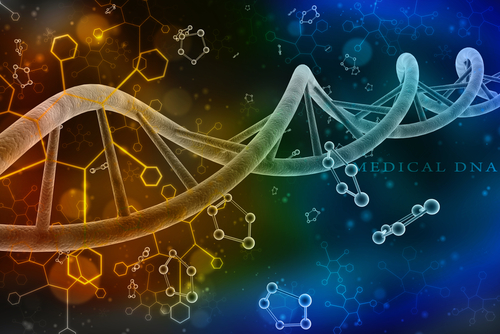Two large-scale studies led by researchers at the University of Queensland in Australia have generated new information on the genetic basis of endometriosis.
One of the research pieces, titled “Meta-analysis identifies five novel loci associated with endometriosis highlighting key genes involved in hormone metabolism,” appeared in Nature Communications.
It was based on a genome-wide association study of 17,045 endometriosis patients and 191,596 controls.
This kind of study is a relatively new approach to identifying genes that play a role in disease. It involves searching a person’s genome — or complete set of DNA — for small variations that occur more frequently in people with a disease than in people without the disease.
With this analysis the team identified five new components of gene that were significantly associated with the risk of developing endometriosis.
“Although genes are not the only deciding factor for whether or not a woman will develop endometriosis, it’s important to identify genes increasing a woman’s risk so we can understand the factors causing this disease,” Grant Montgomery, a professor at the University of Queensland’s Institute for Molecular Bioscience, said in a news release. He was a senior co-author of the study.
“We know genetic factors account for 50 per cent of a woman’s risk of developing endometriosis,” he said. But “it is not one gene mutation that causes this disease, but multiple genetic variations that contribute to incrementally increasing a person’s risk.”
The other study, published in Scientific Reports, was titled “Analysis of potential protein-modifying variants in 9,000 endometriosis patients and 150,000 controls of European ancestry.”
It involved a data analysis strategy called exome-array that focuses on the sequences that encode proteins rather than all of the genetic information in a sample. The team hoped that this more sharpened strategy would identify gene variations that their genome-wide association studies missed.
They analyzed data on 9,004 endometriosis patients and 150,021 controls of European ancestry. The information came from six patient registries: QIMR-Australia, LEUVEN-Belgium, NHS2-USA, BioVU-USA, WGHS-USA, and iPSYCH-Denmark.
Initially, the researchers demonstrated a significant association between a mutation in a region of the CUBN gene and two other genes: CIITA and PARP4. The finding failed to hold up in an analysis aimed at confirming the results, however.
Using another confirmation approach, the researchers then looked at the sequences of the genes they had identified before as possible links to endometriosis. The only gene that continued to show a potential link to endometriosis was GREB1. The team failed to identify any protein-modifying variation that could connect GREB1 and endometriosis, however.
They said this finding could stem from demographics. When they first time linked the gene to endometriosis, they were studying people of both European and Japanese ancestry. The second study involved only people of European descent.
The team called for additional studies that include other ethnicities and women at high risk of developing endometriosis.
“Although there is still a long road ahead before endometriosis can be diagnosed without laparoscopic surgery, or new treatments are created to better treat the disease, we are making significant progress towards achieving this goal,” Montgomery said.

